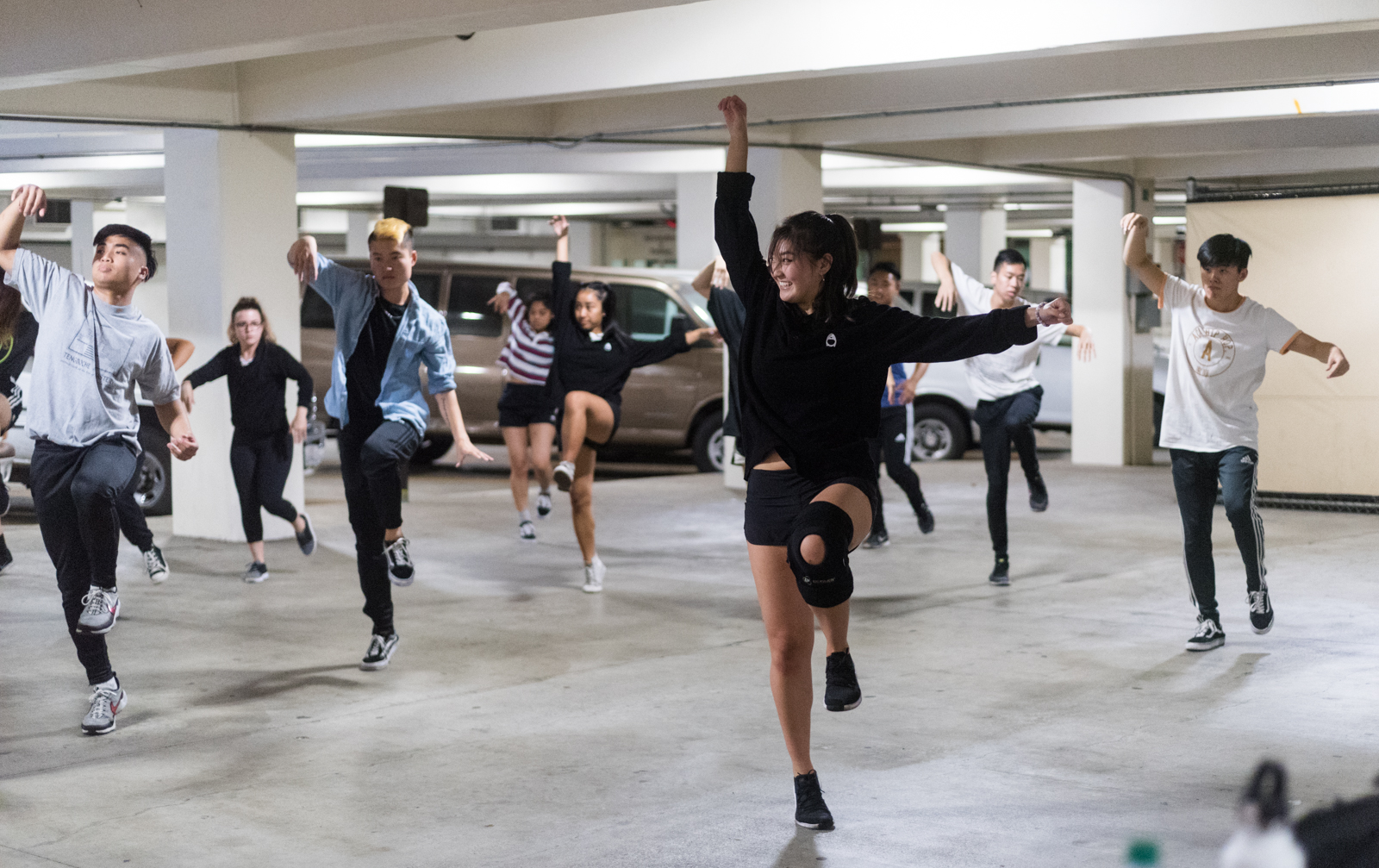Cluster of choreographers bring unique hip-hop styles to dance workshops

UCLA’s Association of Chinese Americans has offered hip-hop workshops throughout the summer, featuring a variety of choreographers at each session. Co-coordinator Eric Lee said both participants and leaders improve their ability to focus on and expand their dance styles.
(Amy Dixon/Photo editor)
ACA Hip Hop
UCLA Lot 4 P1
August 21
Free
By Eli Countryman
Aug. 19, 2018 11:09 p.m.
Quick, sharp moves are a staple of most hip-hop styles, but ACA Hip Hop choreographer Jay Tran taught a workshop devoted to the opposite.
The Association of Chinese Americans’ dance classes, which are held for free in UCLA’s Lot 4 throughout the summer, each feature a different in-house choreographer. The roster includes Tran as well as 13 other sets of dancers leading their own lessons, each with a distinct style. The team’s dancers submitted original choreographies to the team’s three coordinators for the workshops they would lead, said Eric Lee, a rising third-year visual communication design student and a co-coordinator for the group. He said the diverse styles represented by the list of dancers aid both the choreographers and attendees by improving their ability to focus on and expand their styles.
“No two choreographers are the same because everyone has their own interpretations on how they want to move and different experiences from their backgrounds that they added into their choreography,” Lee said. “(Students) can learn a bunch from choreographies from different people.”
As one of the ACA dancers who led a workshop this month, fourth-year sociology student Jay Tran said he wanted to show students that multiple methods exist to interpret sound into movements – in other words, texturing the dance. Many of the ACA choreographers demonstrate different forms of texturing throughout their dances.
“If there’s a snare, you can hit it hard, you can hit it soft, you can go through it,” Tran said. “With each choreographer, they all interpret sound differently, which is like their texture.”
For his lesson, Tran said he elected to create a dance that began slowly and featured softer movements, then became faster and sharper towards the end of the routine. Whereas some teachers had more upbeat styles and tense movements, Tran’s dance was intended to show attendees that going all out with energy during each dance is not always necessary; smooth, calmer dances exist as well in hip hop.
Nicole Chun, an alumna who attends some of the sessions, said the classes also benefit college students who are searching to find a dance team on campus. Though not every dance will be a hit with every student, Chun said many of the students could relate to at least one of the lessons, potentially considering whether any ACA choreographies fit into their style.
“There’s always a workshop for someone,” she said. “If one workshop isn’t right for you, the next one will be a totally different style.”
Though not everyone who comes to the lessons wants to join one of UCLA’s dance teams, many of the students who attend plan to try out, Lee said. Attending such a diverse palette of dances can benefit the latter group, he said. The more classes students attend, the more comfortable they will be with retention of choreography as well as diversifying the textures they know.
The team members who lead dance sessions also get the chance to improve as dancers, he said. When challenged with creating routines from scratch, he said many dancers are pushed to discover the essence of their own style and explore the extent of their body movements. For a dancer to be able to choreograph, they must know the style they feel comfortable creating a dance in, he said
Maia Le, a rising fourth-year biology student and an in-house dancer who led her first session this summer, said teaching a choreography she put together with a fellow member of the team encouraged her to work on choreographing for more workshops in the future. Though she said she mimicked a bit of the teaching style from other dancers – like breaking down the moves without music before matching it to the beats – each move has brought her closer to understanding her own special qualities as a dancer and her preferred style.
Le said leading a lesson in front of other students opened her eyes to the many textures that can be added to a dance, similar to how attendees learned of such stylistic diversity from choreographers. Having had plenty of experience with her own dance ability, she said choreographing for others helped her learn how others grasp aspects of her executional choice. She said the dance she taught was more of a skeleton framework, so students were free to make the moves more fluid or stick each hit based on how they visualized the dance.
“I understand how I move and how I interpret the dance, but since it was my first time, I’ve never seen how other people interpret it,” Le said.


